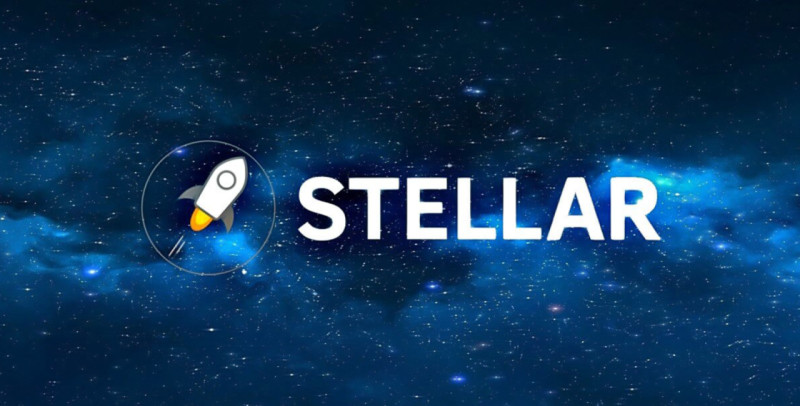
Lumens, or XLM cryptocurrency, is part of the Stellar project infrastructure. Stellar Network is an open-source network used to make virtual payments.
Stellar Network was created in 2014 as a result of the Ripple platform split.
Initially, the project was developed as a fork of Ripple, but later, its creators decided to change the architecture to realize the goals of the new network.
Stellar is unique in that it can support more than a thousand money transfers per second. It can confirm transfers in just 3–5 seconds. The cost of one transfer is less than $0.00001.
In this article, we will focus on the history of the creation of this project, its features, the pros and cons of the network, consider the key points of the Lumens cryptocurrency (XLM), and discuss the prospects of both the project and its token.
History of Stellar project
Stellar Network is a blockchain platform that was developed in 2014 after the split of the Ripple blockchain platform.
Stellar is both the distributed ledger on which the entire infrastructure is built and a framework that has its own rules and algorithmic protocols.
The founder of Stellar is Jed McCaleb. At the time, he was known to the crypto community as one of the founders of file-sharing service eDonkey2000 and crypto exchange Mt.Gox, as well as co-founder and CTO of Ripple. During his time at Ripple, McCaleb was frustrated that the project was too centralized. McCaleb focused solely on financial institutions and came up with the idea of launching a decentralized version of Ripple. However, he intended to focus on private electronic payments.
McCaleb wanted to create a decentralized platform based on which it would be possible to conduct transfers of digital money between people and companies as quickly, cheaply, and, of course, securely as possible.
Initially, the project was developed as a fork of Ripple, a modified copy of an existing blockchain. However, later, Stanford University professor David Mazier, who joined McCaleb's team, came up with a new consensus protocol, the Stellar Consensus Protocol. It was applied specifically to the new blockchain, which was named Stellar.

In July 2014, Jed McCaleb and David Mazier registered a non-profit organization called Stellar Development Foundation (SDF) in San Francisco. This organization received $3 million in funding from US IT company Stripe.
Stellar Development Foundation (SDF) is an organization that has been developing the Stellar network and its native token, XLM. It organized collaborations, advertising budgets, finding new customers and investors, and also buying interesting startups that could eventually be built into the Stellar ecosystem.
The SDF is headquartered in San Francisco. An office was also opened in New York.
The main purpose of creating the Stellar network was to minimize the problems existing in the industry at that time, which were related to micropayments. The developers of the project also stated that they wanted to help people who, for one reason or another, could not use banking services, especially in developing countries.
The first investor in SDF is considered to be Patrick Collison (the founder of the IT company Stripe). It was he who was the first to risk transferring $3 million to the company. However, in exchange, he asked for 2 billion coins of the native token of the XLM network. Stripe is a popular American technology company that develops solutions for accepting and processing electronic payments.
In May 2017, Lightyear.io appeared as a commercial division of Stellar. In September 2018, this division was acquired by Chain, and the new combined company became Interstellar.
Interstellar today develops and implements solutions to increase the efficiency of cross-border payments by using the power of Stellar's blockchain.
In 2019, Jed McCaleb stepped down as CEO of SDF and was replaced by Denelle Dixon, who previously served as chief operating officer of the Mozilla Foundation.
Uniqueness of Stellar platform
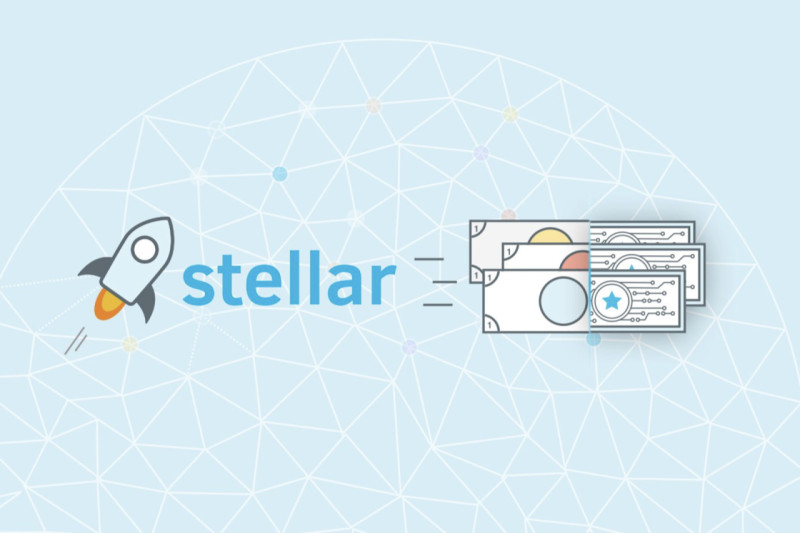
The Stellar blockchain is based on the Stellar Consensus Protocol (SCP), whose mechanism is very similar to the Byzantine Fault Tolerance (BFT) protocol of the Ripple network. The difference is that in the SCP protocol, all validators are equal to each other and can deploy nodes to create new blocks.
The protocol mechanism is created by compromise, and there are no central control nodes in the blockchain. If a large number of nodes accumulate and create suspicious activity, the entire Stellar network is automatically frozen. This is important for security.
The Stellar system may well be considered universal. For example, the BTC network is applicable for making transfers exclusively with bitcoins. The Stellar network is a decentralized system that is suitable for transfers with absolutely any digital asset.
Like all open-source projects, the main repository of the Stellar network is located on GitHub. From there, blockchain clients can access all parts of the blockchain. The project consists of 90 different parts, including the basis of its protocol, the operating core, the clients themselves, the SDK, and the Docker package. All of them function under the Apache 2.0 license.
This means that the Stellar project guarantees its customers that the code can be used in public or even private projects.
Stellar also has a public ledger that is used to track the ownership of all existing accounts and all tokens on the network. The network maintains a registry and processes all transfers through its own unique algorithm called Consensus Protocol.
The Stellar registry houses the balances and transactions of all accounts, i.e., information about what they plan to do with their stored funds. For example, the balance of a user account may be 1,000 XLM tokens and $100, the registry will display these funds and those that the user plans to send to another account (for example, 100 XLMs waiting to be sent).
All customer balances and transactions are shown to the entire network every 5 seconds. All transfers are verified by Stellar software called nodes. For every transaction scheduled, the nodes perform the verification, the correct amount must be transferred.
Nodes are located all over the world. Anyone can turn their personal computer into a node by installing special software from the Stellar network. Once installed, the user's computer automatically becomes part of the Stellar ecosystem.
The Stellar network can process transfers within 3-5 seconds. The commission for these operations is only 0.00001 XLM. Admittedly, you have to keep in mind that the fee may well go up when network activity increases.
Centralization is perhaps Stellar's biggest problem. The Stellar Development Foundation owns roughly 60% of the XLM token supply. Which means it has quite a bit of control over the cryptocurrency itself and its exchange rate.
Even though Stellar uses decentralized nodes in its system, it still does not have many validators. As of today, there are more than 50 of them, but the number is too insignificant, making the network vulnerable to various transaction processing attacks.
Advantages and disadvantages of Stellar project
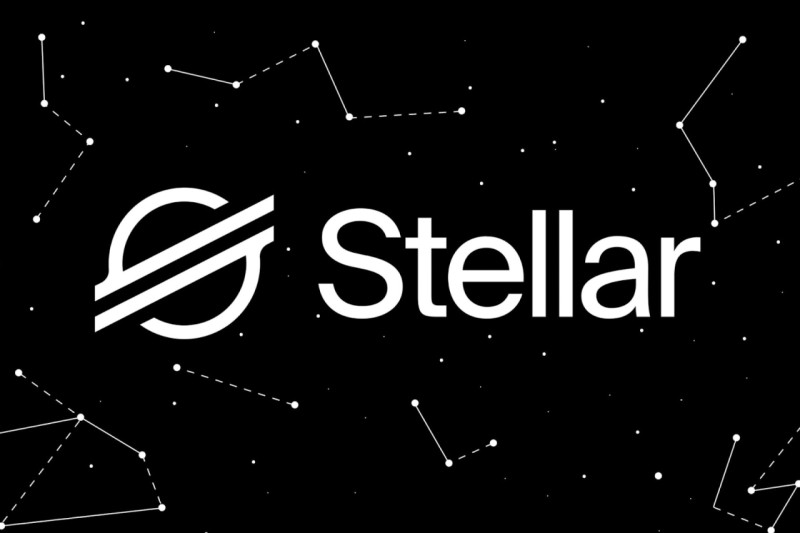
Let's list the main advantages and disadvantages of the Stellar project.
The network has the following advantages:
- quite fast and relatively inexpensive transactions
Stellar charges small commissions for transfers. Confirmations of operations are very fast. In this respect, Stellar is a very convenient means of transferring digital currencies, especially for international transfers.
- decentralization
Stellar is designed for secure transactions between users and is characterized by open access to financial services for everyone.
- interconnection with other blockchains
The Stellar platform can be interconnected with any other blockchain, which improves its operation and significantly expands its use. For example, the platform can easily be used for interbank transfers.
- availability on exchanges
Stellar is available on many crypto exchanges. This facilitates the process of converting the Stellar token to any other cryptocurrency or fiat.
- evolving ecosystem
The Stellar network is constantly evolving and attracting new partners, developers, and investors, which means that it strengthens its place in the crypto market and works on new opportunities in the future.
Let's list the disadvantages of the Stellar project:
- centralization
There is an opinion that the Stellar blockchain and protocol are controlled. That is, there is an organization that creates and maintains the entire Stellar ecosystem.
- lack of privacy
The native token of the Stellar project is open and transparent, which means it is not suitable for those who want to keep their data anonymous.
- small set of tools and features for developers
The Stellar network has a relatively small set of tools and capabilities for developers, which therefore limits users in some respects.
- increased volatility of the project's native token
XLM cryptocurrency can be very volatile on charts, that is, in a short period of time, its rate sometimes changes quite significantly.
XLM cryptocurrency: tokenomics and storage options
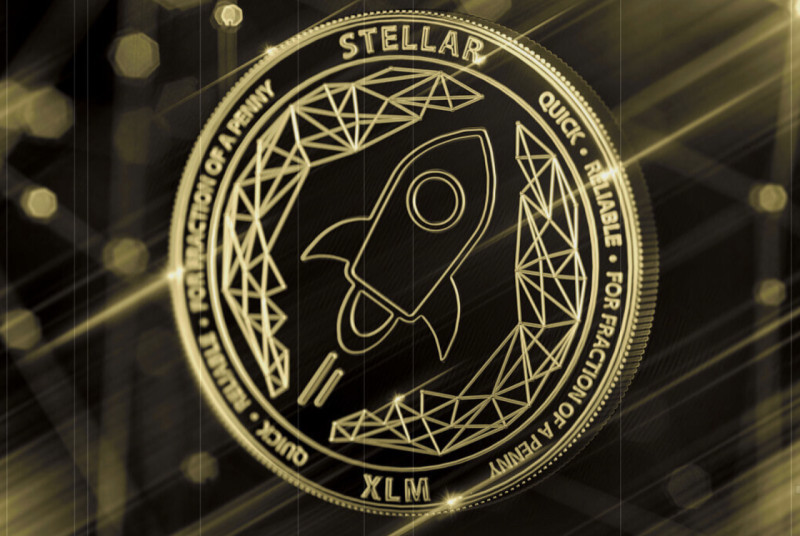
Lumens, or XLM cryptocurrency, is a native coin of the Stellar blockchain. With its help, the liquidity of the ecosystem itself is maintained, and the payment of intranet commissions for transactions is carried out.
The token is traded on major exchanges such as Binance, Coinbase, OKX, ByBit, KuCoin, etc. The coin has high liquidity.
XLM cryptocurrency is often used by users to pay transaction fees on the Stellar platform. The project's coins also often act as an intermediate currency that allows Stellar customers to quickly conduct trade transactions.
Fund transfers on the platform are carried out in the following ways: funds transferred through the Stellar network (no matter in what currency they were sent) are automatically converted to XLM, but the recipient will receive them in the desired currency. Example: If a user transfers US dollars to another user in Mexico, the Stellar platform will automatically convert the funds to XLM, but the recipient will receive them in pesos.
It only takes a couple of seconds to complete the conversion, which means sending and receiving funds on the Stellar network is quick and easy from anywhere in the world.
XLM cryptocurrency is backed by blockchain technology and the reliability of the Stellar network. In addition, users can apply the coins as a medium of exchange for any currencies and assets (e.g., cryptocurrencies or fiat). This keeps the token in demand and determines its exchange rate.
The Stellar project uses the Stellar Consensus Protocol (SCP) instead of Proof of Work (PoW), which differentiates it from most blockchains and most cryptocurrencies. That being said, XLM cryptocurrency is not mined. In fact, 100% of XLM coins were released into the crypto space at the time of their creation, and no more will be created.
When the Stellar Network project was launched, the developers created 100 billion native tokens. In the first 5 years, their supply increased by 1% per year. This number of tokens was distributed in the following way:
50% went to users who signed up through an invitation received by network members or to those who participated in a Meetup (organized by the Stellar Foundation).
25% went to partners, companies, governments, institutions, and various non-governmental organizations that contributed to the growth of the project and its adoption in the crypto industry.
20% went to BTC and XRP (the native token of the Ripple project) holders.
5% was reserved for the Stellar Foundation's operating expenses.
How to buy XLM coins
Since XLM cryptocurrency is a liquid token, it is important to know on which crypto exchanges you can purchase this token.
Today, the XLM cryptocurrency is quite a popular token, so there are many crypto platforms where you can trade these coins.
You can buy Stellar tokens on Binance, Kraken, Bitfinex, Bittrex, Toobit, and many other exchanges. Before making a choice in favor of one or another platform, it is important to evaluate its reputation in the market, see how convenient it is to use, and be sure to find out what the transaction fees are.
Once the choice is made, the user needs to register on the platform and verify their account. Most often, platforms require scanned pages of a passport or other documents that can confirm the user's identity and place of residence.
When the registration and account verification are complete, the user will need to top up their trading account. Many platforms offer a variety of payment methods, for example, via bank cards, bank transfers, or with the help of electronic wallets. However, it is necessary to take into account that each payment method requires its own fee. In addition, the deposit is limited.
Once the trading account on the exchange is finally topped up, the user can start buying Stellar coins. To do this, they will need to find the XLM/USD or XLM/BTC pair on the platform and then specify the amount they want to buy. When the transaction is confirmed, the XLM coins will be credited to the user's account on the exchange.
However, it is worth considering that buying cryptocurrency on a crypto exchange is always accompanied by the risk of losing a part or the entire amount of one's investment. For this reason, before buying a token, it is important to conduct a detailed analysis of the market and assess all the risks that exist at the moment.
In addition to buying tokens, you can also get them free in some places. Many Airdrops are reward-based, that is, they reward the user with Stellar tokens for performing some actions in social networks. For example, on the Earncrypto.com platform, you can win XLM coins for free. All you have to do is complete one of the tasks. For example, it can be filling out questionnaires, playing games, inviting your friends to the platform, or watching some videos.
In addition, users have the opportunity to obtain XLM coins on numerous cryptocurrencies, such as Althub and Esfaucet.
Ways to store XLM cryptocurrency
There are several options for storing the purchased XLM coins. If the user intends to periodically exchange their coins, it will be more convenient to store them on any crypto exchange. However, it is worth considering that exchanges are often subject to hacking by fraudsters, which means that the security of such storage is rather low.
If the user plans to exchange tokens in small amounts, exchanges such as Binance are ideal for storage, as they have a fairly high level of security for client savings.
If the user decides to stop a day trading strategy, they can always send XLM coins to their mobile wallet, such as Jaxx.
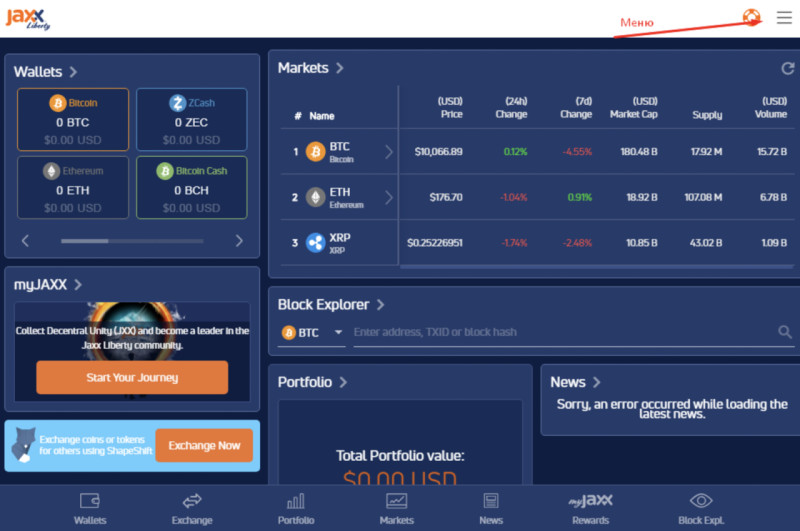
The user can also download the wallet app to their smartphone and start using it just 10 minutes after downloading it. This is very convenient, as there is access to digital assets at any time.
If the user is interested in a more secure way of storing cryptocurrency, one can use Stronghold. This is a decentralized exchange for the Stellar network.
The cryptocurrency can also be stored on hardware wallets such as Trezor, Ledger Nano S, and KeepKey.
Changes in XLM prices
When the Stellar cryptocurrency was launched in 2014, it cost $0.003. Since it was a new cryptocurrency and not many people knew about it, there was no reason to expect its impressive rise. And indeed, for the first few years of XLM's existence, it did not cost a lot. That is why anyone could buy it.
The XLM coin could not break the cent barrier until May 2017, that is, three years after it appeared on the open markets. Some modest growth undoubtedly took place, but it was not impressive.
Everything began to change at the end of 2017 when the crypto market was celebrating a real boom. That is when the XLM coin started gradually rising on the charts.
The fall in the cryptocurrency market in the summer of 2021 was also reflected in the XLM token, which ended June with a drop of more than 28% to $0.2830, while July saw a slight recovery of 1% to $0.2857.
August 2021 brought some hope to cryptocurrency holders, as the Lumens token closed this month at $0.3048, adding more than 6%. In September 2021, traders saw another batch of bad news in the crypto industry. Thus, the XLM cryptocurrency failed to hold its ground and shrank by 8.5% to $0.2788.
XLM cryptocurrency closed 2021 near the $0.27 mark. In January 2022, the token closed below $0.20. In February 2022, Lumens initially had an uptick and exceeded $0.25 on February 8. However, the cryptocurrency began to fall amid the beginning of a special operation in Ukraine. On February 24, the coin was traded at its lowest level of $0.16.
After that, the cryptocurrency moved uncertainly upward, and on April 19, it became worth a little more than $0.20. On May 6, 2022, the intraday low was again at $0.1657.
The token was limited in value in the first half of 2022 due to the turmoil in the crypto market, which was caused by the cancellation of UST and the demise of the LUNA cryptocurrency. On May 12, XLM's price slid to a low of $0.1067. Later, it started a gradual recovery to $0.1375.
The maximum price of XLM was recorded 6 years ago, namely on January 3, 2018, at the level of $0.8756.
At the moment, the cryptocurrency's exchange rate is $0.1247. Today, it is 85.73% below its all-time high.
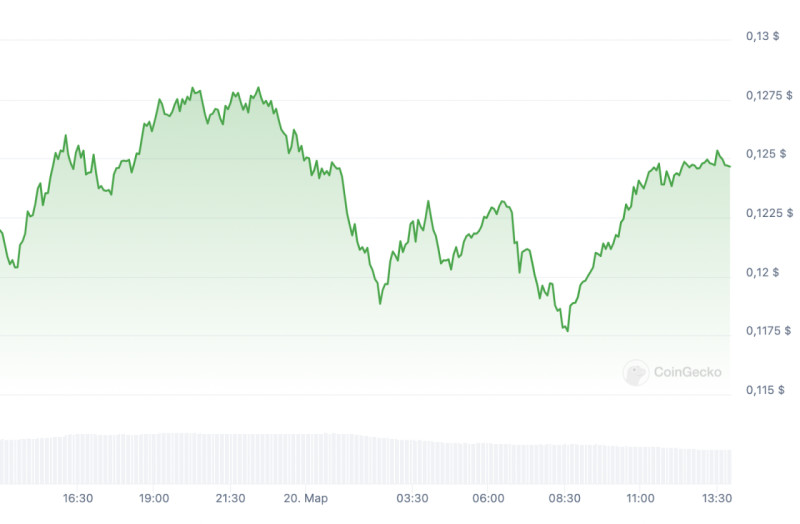
The market capitalization of the Stellar token is currently $3,578,907,938. Market capitalization is determined by multiplying the value of XLM by the total number of coins circulating in the crypto space (there are 28.70 billion of them on the market at the moment).
Future of Stellar project
Stellar cryptocurrency is considered undervalued in the crypto market by many investors. The Stellar Network project is promising, as it is in demand among users due to its ease of use in the payment world.
Stellar Network has been showing continuous growth throughout its existence. For example, if we take the period from 2020 to 2021, the number of payments on the platform increased by 378% year-on-year.
However, like any cryptocurrency, the Stellar project itself and its native token cannot be called stable. No analyst will give a 100% guarantee that the platform will have long-term success. The Stellar network is used similarly to the Ripple payment protocol, but the Ripple native token (XRP) has a much more significant market capitalization.
The current architecture of the project supports only one thousand transactions per second so far. This speed may not be enough if Stellar is going to become a universal platform for international payments.
At the moment, the Stellar team is working hard to increase the throughput. The developers plan to reach 5,000 transactions per second. This is necessary to take the project to the next level.








 Back to articles
Back to articles

